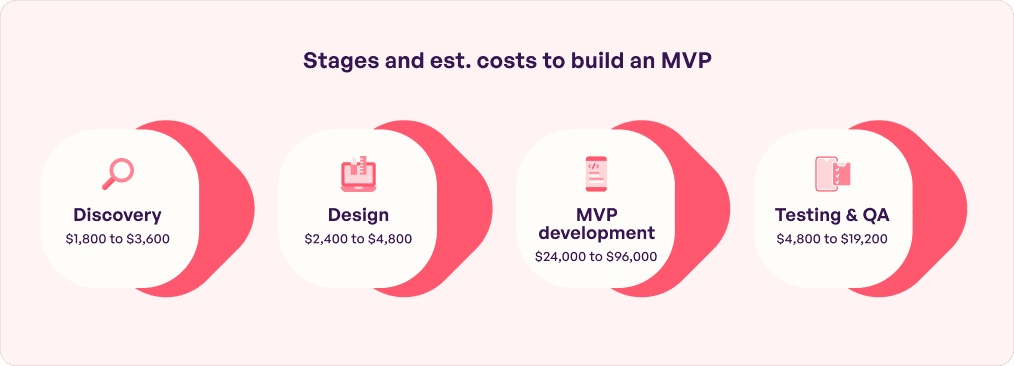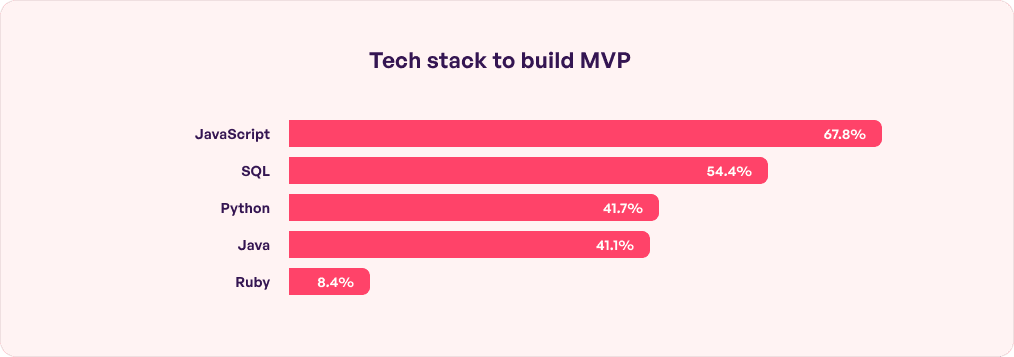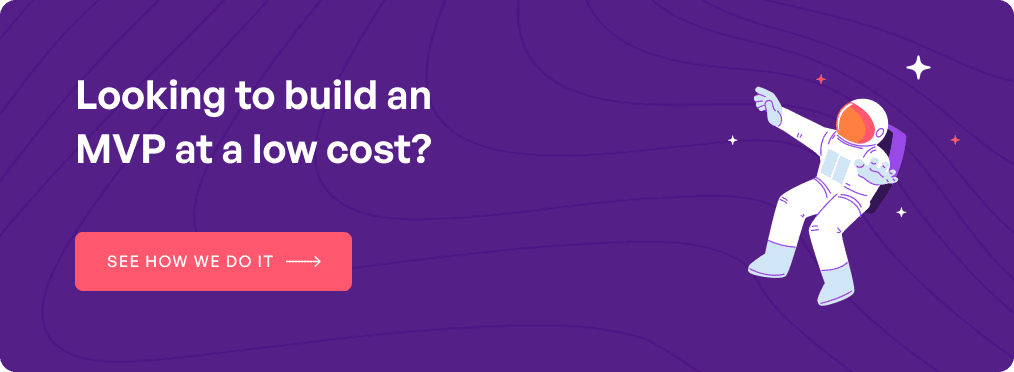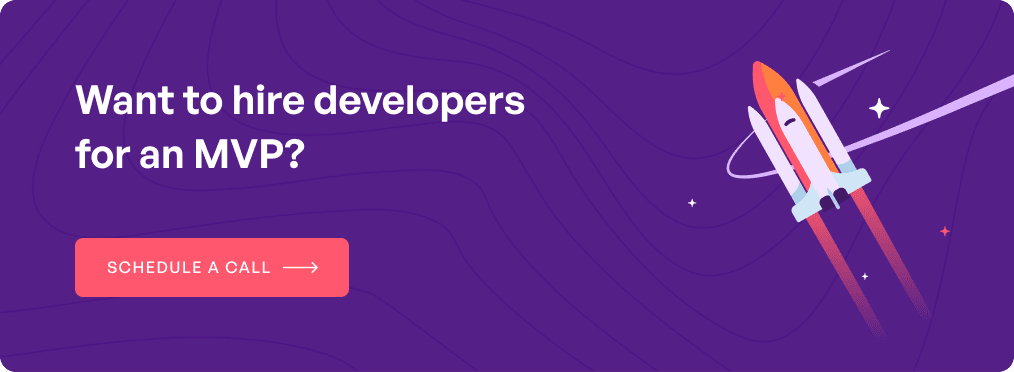American entrepreneur Eric Ries describes MVP as an initial version of a brand new product which lets businesses gather the ‘maximum amount of validated learning’ about its customers with minimum effort. The early adopters of the MVP demonstrate a certain attitude and behavior which can be used to predict the appeal and market viability of a full-fledged product. This is especially helpful for startups since they can test the water to understand how real users will perceive the product before investing more money. So, working on an MVP software development budget is worth your time and money rather than wasting them on questionnaires and surveys.
You will be surprised to know that the first iPhone (2007) was actually an MVP. Apple wanted to test a few ideas like if users are okay without a keypad and if they are willing to browse apps on Safari instead of downloading them on the phone. It also had limited apps, no Siri, notifications, or App Store, and a single theme. And now over a decade later, iphones have everything from AI launched in WWDC 2024, bionic chips, and 5G capabilities.
MVP has truly transformed the idea of releasing products by significantly shaping the final version and its market strategy. But how to get started? Well, we at Simublade, a premier app development company in Houston, offer MVP development costs between $20K and $50K depending on the complexity levels. This article further gives you the breakdown of building an MVP and other details for an informed choice.
Table of contents
What is the cost to build an MVP?
As per an IDC report, multiple businesses are expected to increase their mobile app spending leading to 750 million apps worldwide in 2025. If you are a part of the bandwagon, consider an MVP first, a mid-point between risk and ROI. It typically has only the important features and functionalities that encourage adoption, engagement, and sales. This is also the fastest way to ensure a validated learning loop and test the hypothesis of your idea. So, there are fewer chances that your app will fail.
However, the end result of MVP software development is not always a ‘product’. It could be a live prototype or a smoke test, irrespective of the outcome, MVP’s goal is to help businesses build a pre-launch customer base and save plenty of time and resources. Here’s an MVP app development cost breakdown for easy budgeting in 2024 and beyond.

Stage 1: Discovery
Estimated cost : $1,800 to $3,600
This takes between 3-4 weeks. The product manager will refine your idea after scrutinizing it under the technology and market viability microscope. Simultaneously, the developers will also align with your goals by identifying the key features and finalizing the workflow.
Stage 2 : Design
Estimated cost: $2,400 to $4,800
This takes anywhere between 2-3 weeks. The experts design a product that showcases the core features. Wireframes and mockups are added as well. These are done based on client feedback, their business requirements and industry practices. Altogether, these are meant to guide users towards becoming paid customers and thus ensuring viability.
Stage 3: MVP development
Estimated cost: $24,000 to $96,000
This takes anywhere between 8-10 weeks. Here, a secure MVP is built via coding and implementation. The pre-decided development tools, frameworks, and programming languages are used in the process. One of the top benefits of building an MVP is that features of the software have a scope of extensive testing to ensure seamless performance for prospective users.
Stage 4 : Testing and QA
Estimated cost: $4,800 to $19,200
This takes anywhere around 2 weeks. An end-to-end user-testing and quality assurance are conducted under various conditions. So, the developers ensure high-end functionality and thus deliver an altogether robust application. The software is also well-protected against cyberthreats to ensure zero data leaks and ensure the cost to build an MVP does not exceed your pre-planned budget.
Stage 5: Deployment
This takes anywhere around 1 week. The MVP is deployed on platforms where your target audience is most active. It will help gather high quality feedback which helps redefine the market strategy or other developmental goals.
At Simublade, we follow these exact steps to help businesses reap the maximum benefits of building an MVP before the final, full-fledged product. This helps it become no less than an asset for your business. We work around your source code, clickable prototype, UI UX design, intellectual rights, and technical documentation for comprehensive support.
How much time does it take to build an MVP?
Our top-notch developers in Simublade are committed to turn your idea into something testable within the minimum timeframe. So, we come up with a robust market-ready MVP in a minimum 12 weeks. In fact, we take pride in our 98% on-time project deliveries in the past.
The good news is that despite the minimum delivery timeline, the quality is never compromised. We promise an MVP that ticks off user-experience, scalability, and functionality. Further, it is a feedback-friendly product for future development with low MVP development costs which altogether make it a fruitful partnership.
Which factors impact the cost of building MVPs for startups and enterprises ?
Statistics say that the total app market revenue worldwide is expected to show an annual growth rate of 8.83% between 2022-2027 leading to $673.80 billion by 2027. These successful market figures make it necessary for brands to tap on the profit potential. The first step towards this is to have an effective MVP before a full-fledged application.
However, no two MVP prices can be the same. It typically varies between industries and businesses. This is solely because the MVP software development cost depends on a multitude of factors and a clear look into each one will help manage your product development expenses carefully. Brands like you will also get an idea of which areas to prioritize for mindful budgeting about MVP app development cost. Read on to learn the factors.
Core functionalities
Brands release an MVP to identify the demands, needs and goals of their end-users. It is also a way to gather improvement ideas and some revenue from the early customers. After this, a fully-functional app is launched into the market. All of this is successful when the MVP highlights the primary functions to:
- target a particular group of audience
- fulfill specific pain points of customers
- delivers and showcases the main idea behind the app
Now, the cost to build an MVP increases if it is highly advanced with complex features. For example, adaptive and responsive video games with AI can be expensive. Integrating payment portals, data storage, in-app purchases, data syncing, and geolocation can also incur additional expenses for the business.
On the other hand, an MVP of an alarm clock or to-do-list app would be simple and straightforward. Thus it will require minimum investment and control the costs effectively.
UI UX design
UI is the display of an app. UX is how the app functions. Together, the UI UX design is a critical part of an MVP to ensure easy use without hiccups. It is important because a study found that a high user percentage of users delete apps due to a crash or freezing. For instance, iOS has a user-termination rate of 9.45% and Android’s navigation caused a 0.78% crash. So, having a strong UI UX in place is mandatory to reduce friction and ensure exceptional user experience. The results? Well, it increases the chances of better interaction, customer satisfaction, and ultimately boosts profits and revenue.
Application type
There are two types of apps which impact the MVP expenses.
- Hybrid apps have the same design across iOS and Android with a single code. However, they have all the native-app like features. So, if you want to build such an application, the MVP development cost is low.
- Native apps do not have the same design across iOS and Android. So, they require multiple code bases for different platforms. Hence, building an MVP for such an application is usually heavy on the pocket.
Technical specs
Technicalities can be elaborate with real-time updates, huge data processing, detailed app architecture creation, modules and components of the MVP, and complex algorithms. On the contrary, the technical needs of simple MVPs are relatively easy to handle and thus require minimal tools, techniques, and dependencies. The cost will vary accordingly.
Technology stack
The MVP development cost must be analyzed from the technology angle since it is the backbone of a modern and innovative product. At Simublade, advanced tech-stacks in the frontend, backend, database, mobile, and infrastructure are deployed so that the business MVP is expandable, innovative, and well-designed.
 We offer everything from Ruby and Python to Tailwind CSS and JS. Swift, Azure, Google Cloud, Java, and MySQL are also deployed, whose combination supports end-to-end MVP development. Ultimately, the best-in-class interface, UX/UI, features, and functions enhance user satisfaction.
We offer everything from Ruby and Python to Tailwind CSS and JS. Swift, Azure, Google Cloud, Java, and MySQL are also deployed, whose combination supports end-to-end MVP development. Ultimately, the best-in-class interface, UX/UI, features, and functions enhance user satisfaction.
App design
The number of design elements can influence the cost of building an MVP app. This includes pages interaction, mockup, UI UX design, and wireframe – all necessary to ensure a scalable foundation for future improvement. This is necessary since interactivity, look, feel and the user experience are non-negotiable elements of an MVP. Nevertheless, the cost will vary depending on whether the design is simple or requires customized illustrations, prototyping, and hours of research on the developers’ end.
As a responsible business, take time to understand which one would add value to your MVP. Hire developers who can assist you in this process. Ultimately, it gives a thorough understanding of the entire cost depending on what all you add to the list of app design.
How to create an MVP within your budget?
Building an MVP is less costly than getting an actual product made. However, businesses must have a budget strategy in place to ensure they do not run out of money. Getting a product built with the allocated capital helps to keep the business financial path clear and lets you make adjustments whenever you are off-track. Below is a checklist of how to keep the MVP creation budget-friendly.
- Outsource the work to a trusted MVP development company. It ensures a clear understanding of the fixed prices and you pay for specific services. In-house teams might not be feasible since they have higher operating expenses.
- Understand the scope and match it to the costs. Know that more complex the features are, higher are the pricing. Analyzing carefully and prioritizing the essential features will keep the budget from exceeding.
- Take the geographical location into account. Most developers from expensive states and cities might charge higher prices. Else, simply partnered with Simublade, which despite being located in Houston, has affordable rates. You are also less likely to face language barriers or the challenges of remote development teams since we have proven records in delivering MVP development services across the globe.
What are the challenges of building an MVP?
Like every product, MVP has its share of restrictions. However, each one has easy solutions which can be adopted without concrete planning and effort. So, read on to understand what to expect in the MVP creation journey and how to tactfully mitigate them.
Defining the scope
It is necessary to have clear MVP goals and objectives. This will include a prototype, features and functionality frameworks, UI UX design, and a set of technologies. Sometimes, this is difficult since businesses are not able to identify the most essential requirements that would add value to customers and increase the adoption rates. While launching an MVP has a fear around it in terms of market acceptance, prioritizing the critical aspects backed by proper reasoning is a smart move. This is far more helpful rather than trying to include every exciting idea that arises during the brainstorming phases.
Market timings
Building a MVP right when you get an idea might not be a sane idea. Conduct extensive research and monitor the market trends to get a glimpse into the customers’ demands and pain points. You get a clear confirmation that they want what you are offering. Discuss the same with your stakeholders like team mates, investors, and business partners and find an optimal launch time.
Gathering user feedback
A streamlined set of parameters must be in place to track and measure feedback. Further, identify the relevant suggestions and filter the subjective biased ones. Then align them with your vision and value proposition.
Start by focusing on :
- app traffic
- number of registrations
- number of active users
- customer acquisition cost
- churn rates
- user engagement.
Also, pick the right tools like SurveyMonkey, TypeForm, Google Sheets, ProdPad, Wufoo, and Crowdsignal to analyze customer reviews. All of these help you figure out if your audience loves your product or service. Ultimately, you are also able to lower the MVP app development costs by not spending on unnecessary items.
MVP optimization
Work with a point of view that the MVP does not resemble the final product. Cultivate a growth mindset so that it can be transformed into a highly matured application meant for a large audience and market. Optimize the MVP constantly for security, reliability, and scalability. Never be afraid to try new features. In short, try not to get stuck in the MVP stage but test new features, wipe out bugs, boost the utility and performance of it.
What is a good launch strategy for MVPs?
The idea of an MVP is to turn a brilliant idea into a tangible product. So, consider a soft launch first with an approach to get the concept accepted rather than attracting funds. You can then consider a dark launch. This means adding features by and by without the customers knowing that they are your guinea pigs or ‘testers’. In short, keeping them in the dark to check their real reactions. Further, roll out the lean MVP into a specific market niche and in a particular geographical location.
How to hire MVP developers?
The advantages of minimal viable products are plenty. We at Simublade maximize them and create a user-friendly product thus nullifying the fear of zero market acceptance. This is done by using AI, powerful tech-stack, and our in-house MVP prowess. Startups and enterprises globally trust us with their design and development requirements since we understand their aspirations and limitations to the core. Businesses can consider checking our portfolio, verified user reviews and ratings, and awards on Clutch and DesignRush. Further, connect with us to get an idea of our charges, MVP development method, and delivery timeline. It will help you make an informed hiring decision.
FAQs
Q. How much does it cost to build an MVP?
Ans. The cost to build an MVP at Simublade is between $20K and $50K. However, it will depend on factors like core functionalities, UI UX design, app type, and tech stack.
Q. How long does it take to build an MVP?
Ans. Developers at Simublade can build an MVP within 12 weeks.
Q. What does the MVP cost depend on?
Ans. The cost of building MVPs for startups and enterprises depends on core functionalities, UI UX design, technicalities, app type, tech stack, and developers expertise.
Q. How to choose an MVP app development company?
Ans. Choose an MVP development company that has excellent feedback and ratings on Clutch and DesignRush. Further, check portfolio, awards, global rank, and achievements on their official website for the best decision.
Q. What are some good examples of minimal viable products?
Ans. Big brands like Amazon, Dropbox, iPhone ( the first version), Facebook, AirBnb and Instagram are the best examples of starting off as minimal viable products.





